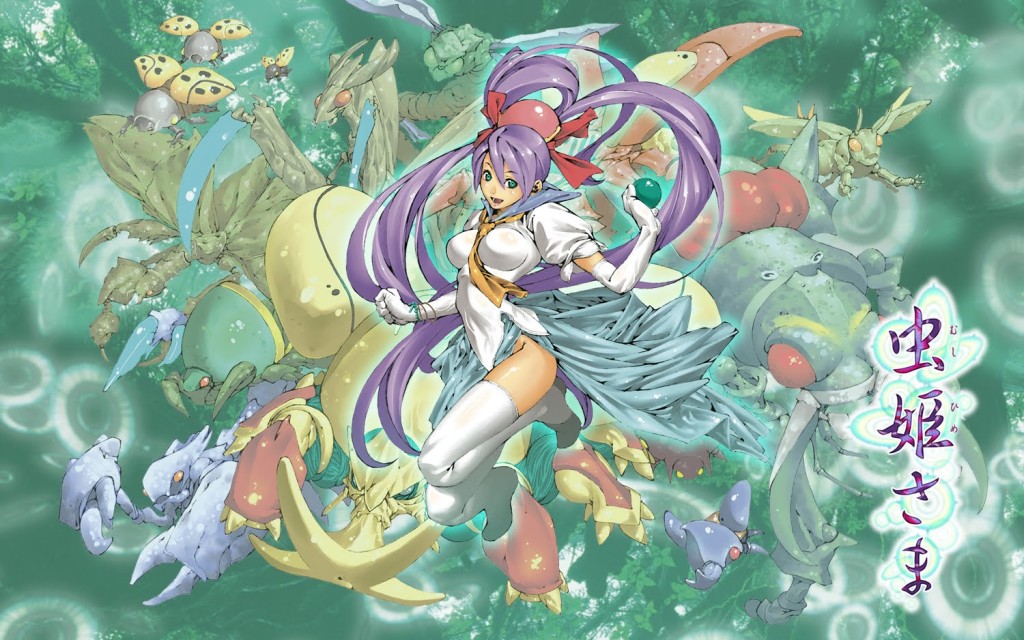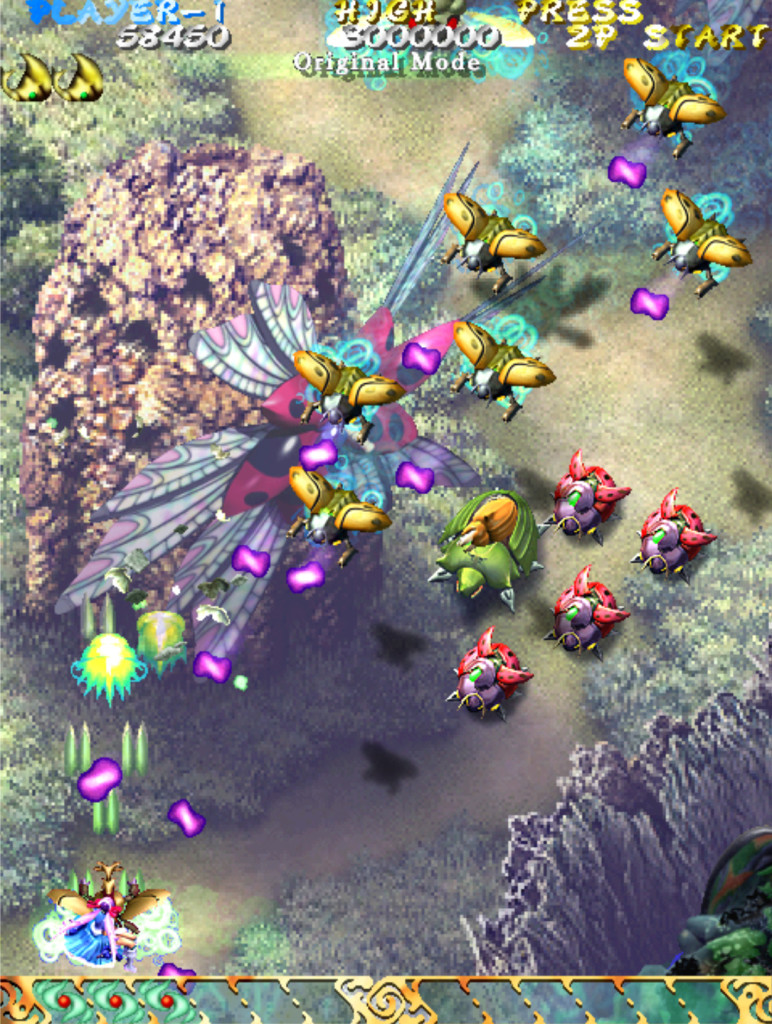Last updated on December 16, 2015
Shmups (or “shooting games”, or “STG”), are a difficult genre to review. What kind of comparisons do you make? What’s a good thing, and a bad thing, about games in this particular genre? What do we consider “classics”, and what does not deserves to be spoken in the same breath as those very same games? Add that to my own personal lack of breadth and depth in arcade games as a whole, and the ability to make a cogent, actionable judgment turns problematic quite quickly.
With that said, I believe I can say that, purely as a video game and irrespective of genre, Mushihimesama is most definitely worth your time and money.
I think we can say, at least right off the bat, that the “story” in a shmup means absolutely nothing; what it does provide, at least, is an appealing aesthetic style that may attract additional audiences to the game in question. My guess is that CAVE, the developer of Mushihimesama, sought to expand the shmup market eleven years ago when they released the game into Japanese arcades. CAVE’s bug focused opus turned from weird idea to smash hit in a few months; merchandising opportunities and additional games emerged, just from a merely decision to set a shooter in a forest with natural beasts instead of a traditional spaceship shooter.
I must say, I think Mushihimesama’s central appeal comes from that look and feel. From the world you traverse to Manubu Namiki’s world-trance music hybrid, all these elements coalesce into something very different for the genre space. While the soundtrack complements the onscreen action, it rarely strives for techno-action beats; instead, it lends credence to the on-screen visuals. Like many of CAVE’s titles, the soundtrack attempts to reflect the pacing of the level in question, whether languid and soft or hard and fast. You get the sense that level design followed the soundtrack, and everything works so naturally together. The game itself is a marvel of two-dimensional graphics, with bright colors and elaborate enemy designs that literally pop in high definition; I shudder to think how much work it took to individually animate each enemy and every moving background. The pink shade also makes each bullet clearly stand out from the background, meaning you only have yourself to blame for taking a hit.
That also lends to the bullet design; in any danmaku shooter (more commonly known in the West as “bullet hell”), you expect lots and lots of brightly colored, and deadly, bullets. Mushihimesama shows just how far CAVE’s patterns progressed over a decade, with some of the most elaborate, cunning, and pretty looking obstacles in the entire genre (at least as far as my experience). They come in all shapes and sizes, each a distinct and easily visible pink, from giant circular radiants to stunningly interesting crossweaves. Each enemy presents a distinct bullet pattern, which you need to recognize and avoid. Sometimes, several patterns home onto your current position at once, meaning you need the understanding, capacity, and knowledge to know where to be, at what time. The action rarely, if ever, lets up, and that means you need to know what you’re doing to stand a chance of success. It is a strange mixture of beauty and brutality, to say the least!
Some of this requires memorization of a sort, whether the mental or muscle kind, but neither in my experience presented an overwhelming challenge. Playing these levels and inhabiting their spaces becomes a fun venture, as you start to grasp the lay of the land and the game’s general pacing. While the first two levels, much like most arcade games, ease you into the experience, the last three stages prove a mighty hurdle for the average player to overcome. Familiarity is a must, and Mushihimesama’s Xbox 360 and Steam ports helpfully provide a Training mode for that very purpose. Remember that all shmups are designed for the “one credit clear”, or 1CC, to truly wring enjoyment out of them; simply continuing when you die means you cannot post a high score, and high scores remain the competitive motivation for Mushihimesama as well. Thus, the arbitrarily-imposed limitation reveals the “real” way to play the game, and also presents its greatest challenge: how well can you coordinate your accumulated knowledge and action-game skills?


